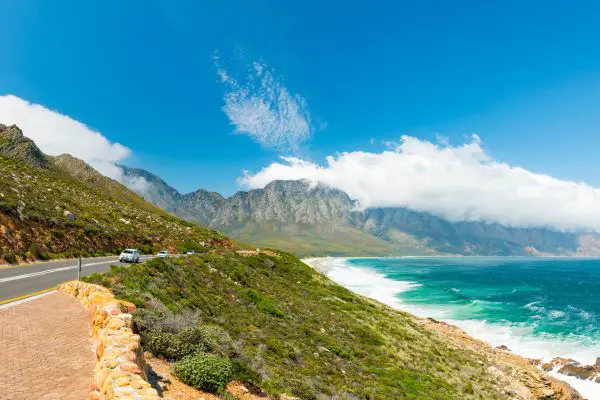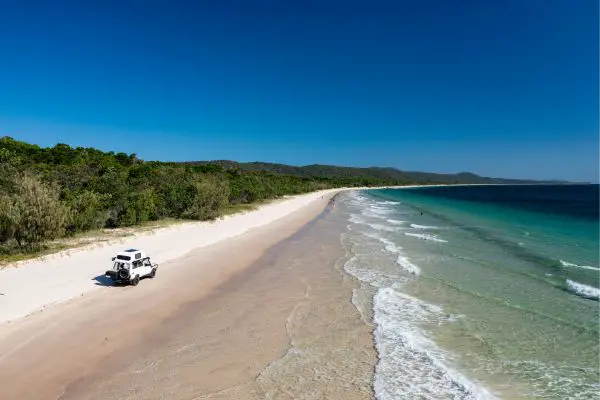The Best Coastal Roads and Beach-Friendly Vehicles: A Traveler’s Guide
The enticement of a coastal drive might be attractive to those who yearn for the sun, sea, and open highways. Driving down the coast, feeling the salty wind, and listening to the constant sound of waves crashing, may be an unforgettable experience. However, not every road is suitable for this, and not every vehicle is capable of handling beach conditions. So, what should you know to make your seaside road trip genuinely unforgettable? Let’s have a look at some of the top coastal roads and beach-friendly vehicles on the market today.
One of the first considerations for planning a coastal road trip is choosing a reputable source for your vehicle needs. Whether you’re in the market to purchase a car, or simply need more information about automobiles suitable for coastal drives, visit A Better Bid Houston to find a suitable vehicle.

Top Coastal Roads to Explore
Pacific Coast Highway, California
Often called Highway 1, this iconic road stretches over 650 miles, offering drivers panoramic views of the Pacific Ocean. The twists and turns between Carmel and Morro Bay are especially renowned.
The Pacific Coast Highway route takes travelers through a variety of scenery, each with its own distinct beauty. After leaving the upmarket artistic community of Carmel, the path descends into the Big Sur region, where the Santa Lucia Mountains meet the ocean in dramatic fashion. The Bixby Creek Bridge, one of the world’s tallest single-span concrete bridges, is a testimony to human innovation set against raw natural beauty. As you go further, deep coastal forests give way to sandy beaches and coastal cities, each of which offers a taste of California culture. The Pacific Coast Highway is more than simply a route; it’s an ever-evolving narrative of nature and society coexisting happily. From small cafes with ocean-view terraces to viewing sites where the horizon appears unending.
Great Ocean Road, Australia
This is a 151-mile-long road that runs between Torquay and Allansford. Known for its stunning limestone stacks called the Twelve Apostles, this road offers an unparalleled coastal experience.
Travelers who drive along the Great Ocean Road are greeted by a stunning interplay of craggy cliffs, lush jungles, and a peaceful beachfront. The path winds past gorgeous seaside communities such as Lorne and Apollo Bay, where small cafes and craft stores provide a relaxing, bohemian atmosphere. The route continues past the renowned Twelve Apostles to the eerily stunning Loch Ard Gorge, a witness to the strength of the water and the passage of time. From flowing waterfalls buried within the Otway Ranges to kangaroo-dotted grasslands, each curve of the road exposes another natural beauty. The Great Ocean Road’s constantly changing landscapes ensure that no two travels are ever the same, with each voyage revealing new vistas and hidden jewels waiting to be discovered.
Amalfi Coast Road, Italy
Known for its picturesque views of small towns, lush terraces, and the Tyrrhenian Sea, this road is a must-visit. Though narrow and winding, the views are well worth the drive.
Drivers who travel further down the Amalfi Coast Road are confronted with a stunning blend of history, architecture, and environment. The path winds through pastel-coloured settlements such as Positano, Ravello, and Amalfi, each clinging precariously to the mountainside and appearing virtually hung between the sky and the sea. As one travels through these villages, historic cathedrals with beautiful mosaics, centuries-old houses embellished with murals, and busy market squares come to life. Lemon orchards fill the air with a lemony aroma, and vineyards extend across terraces, demonstrating the region’s agricultural background. Every bend on this serpentine route offers stunning views of the azure Tyrrhenian waves colliding with steep cliffs, making it a thrilling journey that mixes Italian culture, art, and the timeless beauty of the Mediterranean.
Atlantic Ocean Road, Norway
A unique 5.2-mile stretch that takes you over eight bridges, this road offers mesmerizing views of the Atlantic Ocean. It’s an engineering marvel that is both thrilling and scenic.
The raw splendour of Norway’s coastal environment unfolds considerably further along the Atlantic Ocean Road. The road appears to dance with the waves, sometimes barely skimming the surface and other times arcing gracefully into the sky via sculpted bridges such as the legendary Storseisundet Bridge, which appears to vanish into thin air from certain angles. This journey isn’t just about the enormous ocean; it also passes through peaceful fjords, rugged coastal inlets, and solitary islets teeming with seabirds. The ever-changing weather in Norway adds another layer to the voyage, with sun-drenched stretches giving way to mist-laden areas, creating an otherworldly ambience. During certain times of the year, lucky travelers may even catch a glimpse of the Northern Lights, which paint the night sky in ethereal hues, transforming the Atlantic Ocean Road into more than simply a route but a gateway to nature’s most stunning performances.

Best Beach-Friendly Vehicles
When choosing a vehicle for your coastal journey, consider the terrain. Beaches often have soft sand, requiring better traction and higher ground clearance.
Jeep Wrangler: A classic choice, the Jeep Wrangler has high ground clearance, robust 4×4 capabilities, and is well-suited for sandy terrains.
Toyota Land Cruiser: Reliable and sturdy, the Land Cruiser has long been favoured for its ability to handle tough terrains, including beaches.
Subaru Outback: With its symmetrical all-wheel drive, the Outback provides a good grip on soft sand, making it a popular choice for beach-goers.
Land Rover Defender: Known for its ruggedness and off-road capabilities, the Defender is an ideal companion for those who want to venture beyond paved coastal roads.
Tips for Beach Driving
A few critical concerns must be kept in mind when driving on the beach. To begin, always be aware of tidal periods and drive two hours before or after the low tide for safety. Lowering your tire pressure also broadens the footprint of the tire, improving traction on the sandy terrain. It is critical to keep your car in higher gear since it gives better power delivery and reduces the probability of your tires sliding into the sand. Finally, avoid sharp turns or sudden stops, as they can easily result in your vehicle becoming stuck in the sand.
Furthermore, the unpredictability of beach terrain necessitates drivers being extra vigilant and adaptable. Sand conditions can vary dramatically over short distances, with pockets of soft sand appearing unexpectedly on harder ground. To avoid getting bogged down, it’s critical to maintain a steady pace, especially in these softer sections. Additionally, be wary of hidden obstructions such as driftwood or boulders that may be lurking just beneath the surface. Before embarking on any beach drive, make sure you have basic recovery materials on hand, such as a shovel and traction mats. This planning not only protects against probable setbacks but also offers a more joyful and relaxed beach driving experience.
A coastal road trip can be a memorable experience, combining the thrills of driving with the serene beauty of the ocean. By choosing the right coastal road and ensuring that you have a beach-friendly vehicle, you can make the most of this experience. Always remember to respect local regulations and protect the natural environment during your adventures. Happy driving!






